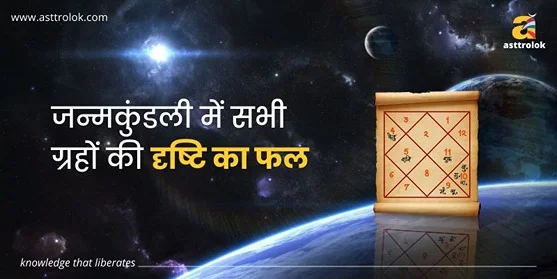
Introduction:
In the tapestry of Hindu traditions, Ekadashi holds a special place as a day of spiritual significance and profound devotion. Jaya Ekadashi, observed in 2024, is one such sacred occasion that beckons devotees into a realm of piety, purification, and divine connection. In this exploration, we'll dive into the heart of Jaya Ekadashi, uncovering its date, significance, Vrat Vidhi (rituals), and the soulful art of Puja (worship).
Get an online astrology consultation by the world-renowned astrologer Mr. Alok Khandelwal.
Jaya Ekadashi: A Glimpse into Divine Harmony
Date of Jaya Ekadashi 2024:
Jaya Ekadashi, falling on the 9th day of the Krishna Paksha (waning phase of the moon) in the Phalguna month of the Hindu calendar, aligns with a cosmic rhythm that resonates with devotees. In 2024, the auspicious date for Jaya Ekadashi is February 24th.
Significance of Jaya Ekadashi:
The term "Jaya" itself translates to victory, and this Ekadashi is celebrated as a triumph over spiritual obstacles and a means to achieve victory over the cycle of birth and death. Devotees believe that observing Jaya Ekadashi with sincerity brings blessings, forgiveness, and divine favor.
The Ritual Tapestry: Vrat Vidhi
Awakening on Ekadashi Morning:
The devout initiate their journey by waking up before sunrise on Ekadashi morning, a practice known as 'Uthapan.' This early awakening symbolizes a fresh start, a spiritual awakening, and a conscious entry into the sacred observance.
Sankalp (Vow) for the Fast:
Devotees then make a solemn vow, known as 'Sankalp,' expressing their commitment to observing the fast with unwavering faith and dedication. This vow is a personal pledge to adhere to the Ekadashi rituals and maintain a pure and pious state of mind throughout the day.
Abstaining from Food:
A central aspect of Jaya Ekadashi Vrat is the observance of a day-long fast. From sunrise to the next day's dawn, participants abstain from consuming grains, beans, certain vegetables, and even water. This fasting period is viewed as an offering of self-discipline and devotion to the divine.
Meditation and Spiritual Practices:
Devotees engage in meditation, chanting of hymns, and reading scriptures dedicated to Lord Vishnu. The serene ambiance of these practices fosters inner reflection, helping participants connect with their spiritual essence and deepen their devotion.
Evening Prayer and Breaking the Fast:
As the sun sets on Ekadashi, the evening prayer takes center stage. Devotees assemble to perform Aarti, sing devotional songs, and express gratitude to Lord Vishnu. Following this, the fast is broken with a simple meal, often consisting of fruits, milk, and nuts. The breaking of the fast symbolizes the conclusion of the Ekadashi observance.
Read Also: Ramayana and Astrological Predictions.
Puja: Weaving the Threads of Devotion
Preparation of the Altar:
The Puja (worship) on Jaya Ekadashi involves the meticulous preparation of the altar. Devotees clean and decorate the sacred space with flowers, incense, and traditional symbols, creating an environment conducive to divine communion.
Idol or Image of Lord Vishnu:
Central to the Puja is the presence of an idol or image of Lord Vishnu. Devotees offer prayers, flowers, and incense to the deity, seeking blessings for spiritual growth, protection, and victory over challenges.
Chanting of Mantras:
Chanting of Vishnu Sahasranama, the thousand names of Lord Vishnu, holds profound significance during Jaya Ekadashi Puja. Devotees believe that the rhythmic recitation of these sacred names invokes divine energies and purifies the mind and soul.
Offering Bhog (Sacred Food):
As part of the Puja, a symbolic offering of Bhog is presented to Lord Vishnu. This offering typically includes fruits, sweets, and items considered dear to the deity. The act of offering Bhog is a gesture of devotion and surrender.
Lighting of Diyas (Oil Lamps):
The glow of oil lamps, or Diya’s, illuminates the Puja space, symbolizing the dispelling of darkness and the arrival of divine light. Lighting Diya’s is a sacred ritual that signifies the devotee's earnest quest for spiritual enlightenment.
Read Also: Ayurveda in the Workplace: Cultivating Productivity and Well-being
The Essence of Jaya Ekadashi: A Soulful Odyssey
Purification and Spiritual Renewal:
Jaya Ekadashi is not merely a ritualistic observance; it is a soulful odyssey of purification and spiritual renewal. By adhering to the Vrat Vidhi and engaging in the Puja with sincerity, devotees believe they cleanse their minds and hearts, paving the way for divine grace.
Victory Over Adversities:
The significance of 'Jaya,' meaning victory, extends beyond the rituals. Devotees seek victory over inner obstacles, negative influences, and the cyclical nature of life and death. Jaya Ekadashi becomes a profound journey towards spiritual triumph and liberation.
Strengthening Devotion and Connection:
Through the disciplined practices of fasting, meditation, and worship, devotees aim to deepen their connection with the divine. Jaya Ekadashi becomes a sacred thread that weaves the fabric of devotion, fostering a harmonious relationship between the seeker and the sought.
Gratitude and Surrender:
Jaya Ekadashi is a day of profound gratitude, where devotees express thanks for the spiritual insights gained and the divine blessings received. The Puja becomes an act of surrender, acknowledging the omnipresence of the divine in every aspect of life.
Conclusion: Embracing the Spiritual Tapestry
In the intricate tapestry of Hindu traditions, Jaya Ekadashi emerges as a vibrant thread, weaving together the disciplines of fasting, meditation, and worship. Beyond the rituals, Jaya Ekadashi is an invitation to embark on a spiritual odyssey, to seek victory over the limitations of the self, and to experience the divine grace that flows through the sacred observance. As the devotees engage in Vrat Vidhi and Puja, they become part of a timeless tradition that transcends the boundaries of time and space, connecting them with the eternal rhythm of the cosmos. In the soulful embrace of Jaya Ekadashi, the seeker finds not just a day of ritualistic practices but a profound journey towards spiritual triumph and inner transformation.
Read Also: Celestial Harmony: Lunar Phases in February 2024 and their Impact on the 12 Zodiac Signs
Comments (0)
Categories
Recent posts


जन्मकुंडली में ...
30 Aug 2023
Importance of Bhakoot Koota in Kundali ...
30 Aug 2023

.webp)














